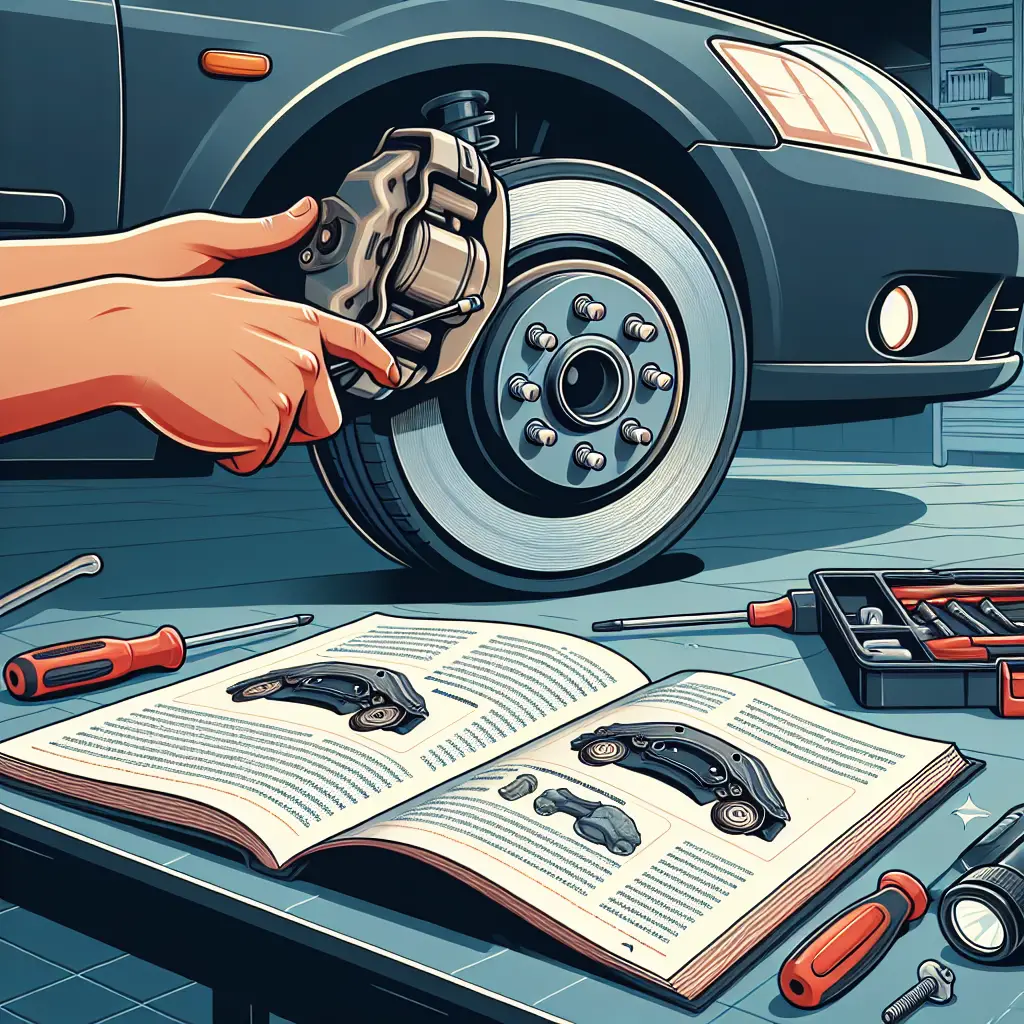How to Get a Rock Out of Your Brakes: A Step-by-Step Safe Removal Guide
Experiencing a persistent, pesky squeak each time you hit the brakes? It may not just be your vehicle telling you it’s time for a routine check-up — you might have a rock lodged in your brakes. While this is often a minor issue, neglecting it can lead to scratches on the brake disc, a deepened groove, or even more severe damage to your brake system.
Don’t worry, though! In this article, we’ll guide you through the process of safely removing a rock from your brakes, helping you to protect your vehicle and ensure a smoother, quieter ride. With careful attention and the right tools, you’ll be able to address the issue without a costly trip to the mechanic.
Step 1: Safety First – Prepare Your Workspace
Before you dive in, it’s crucial to ensure your working environment is safe. Park your vehicle on a level surface, and be sure to engage the parking brake and/or chock the wheels to prevent your car from moving. Next, gather up your safety gear — think gloves and safety glasses — to protect your hands and eyes. Remember, working on a car can pose unexpected risks, even for something as seemingly simple as removing a stone from the brakes.
Step 2: Loosen the Lug Nuts
Your first “hands-on” step will involve loosening the lug nuts on the affected wheel (Kelly Blue Book offers an excellent tutorial on changing a tire, which covers this process thoroughly). You’ll want to break the initial resistance while the car is still on the ground (just a quarter or half turn will do), since trying to loosen tight lug nuts when your car’s on a jack can be dangerous.
Step 3: Jack Up the Car and Remove the Wheel
Use a car jack to lift the vehicle until the wheel is off the ground. Consult your car’s manual for the correct and safe points to place the jack. Once the vehicle is securely lifted, fully remove the lug nuts and take off the wheel to expose the brakes.
Step 4: Locate the Rock in the Brakes
Carefully examine the brake assembly for the rock. It’s commonly found wedged between the brake pad and the rotor or stuck in the caliper. The rotor is the shiny, metallic disc that you’ll see directly behind where the wheel was and the caliper is typically positioned over the rotor. Be patient here – it might take a bit of searching to find the culprit.
Step 5: Remove the Rock
Now comes the gentle operation of removing the rock. You might want to use a tool like needle-nose pliers or a flathead screwdriver – but proceed with caution. Do not scratch or damage any brake components. If the rock is lodged tightly and you’re not confident about removing it without causing damage, it’s wise to seek professional help.
Step 6: Inspect for Damage
After removing the rock, take a moment to inspect the rotor and brake pads for damage. If you notice any significant grooves or scratches on the rotor, it’s time to consider their condition and whether professional service is needed (AutoZone provides an excellent guide on rotor thickness and when replacement is necessary).
Step 7: Put the Wheel Back On
Once you’re confident the rock is removed and there’s no significant damage, place the wheel back on and hand-tighten the lug nuts as much as possible.
Step 8: Lower the Car and Tighten the Lug Nuts
Carefully lower the car back down to the ground. Once the car is stable, tighten the lug nuts with your tire wrench, ideally using a star pattern. This will ensure that the wheel sits evenly on the hub. If you have a torque wrench and know the correct torque settings for your vehicle, use it to ensure proper tightness.
Step 9: Test Drive
The last thing – and it’s an important one – is to take a test drive. Start out slow, listening for any noises and feeling for any vibrations. If everything sounds good, increase your speed and test the brakes a few more times. If you notice a persistent noise or any unusual behavior, don’t hesitate to seek professional help.
Bonus Tips:
- If you’re regularly driving on gravel or dirt roads, consider investing in mud flaps or splash guards to help reduce the risk of rocks flying up and getting lodged in your brakes.
- Regularly check your brake pads and rotors for wear and damage — this can save you from experiencing unexpected and potentially costly issues down the line.
- If you’re not comfortable with any of these steps, take your vehicle to a certified mechanic. Your safety is paramount.
That’s it! You’ve just successfully removed a rock from your brake system – an annoying problem, but one that’s usually easy to fix with a bit of careful attention and the right approach.
If you’ve found this article helpful, make sure to check our other in-depth guides and advice on car maintenance and troubleshooting to keep your vehicle in top shape.
Remember, when it comes to automotive maintenance, a proactive approach is often simpler and less expensive in the long run compared to reactive measures.
Have you had to deal with this issue before? How did you handle it, and do you have any additional tips to share? Let us know in the comments below!
Disclaimer: Always use caution when working on your vehicle. If at any time you are unsure about the process, it’s best to consult a professional mechanic. The instructions provided in this article are meant as a guide and should not replace expert advice or professional repair services.

